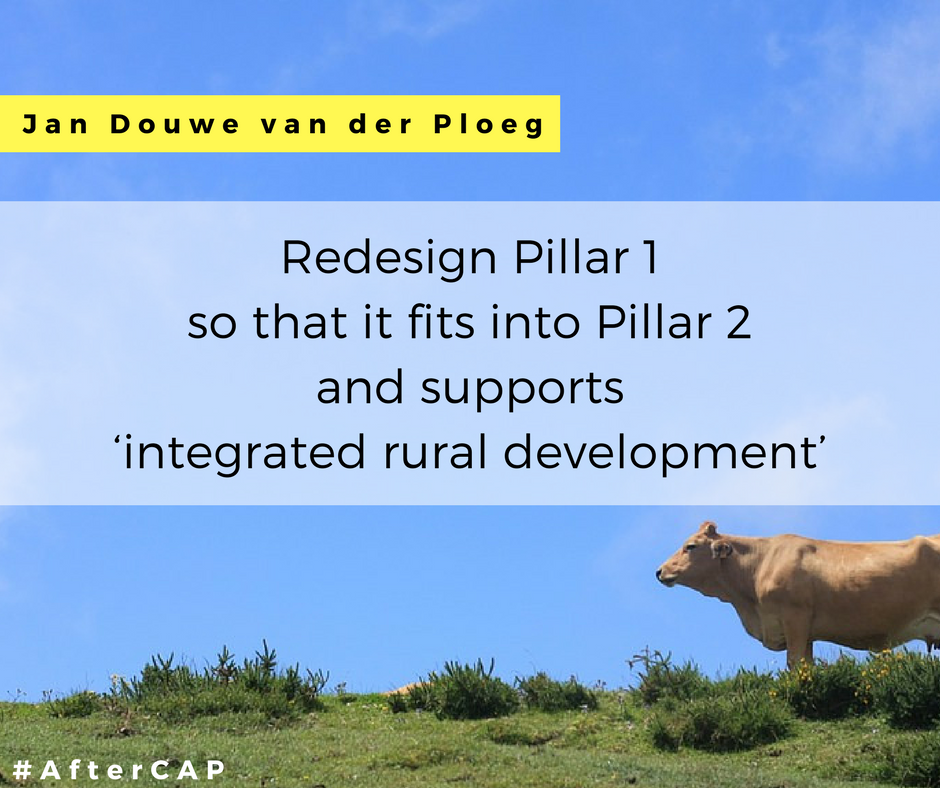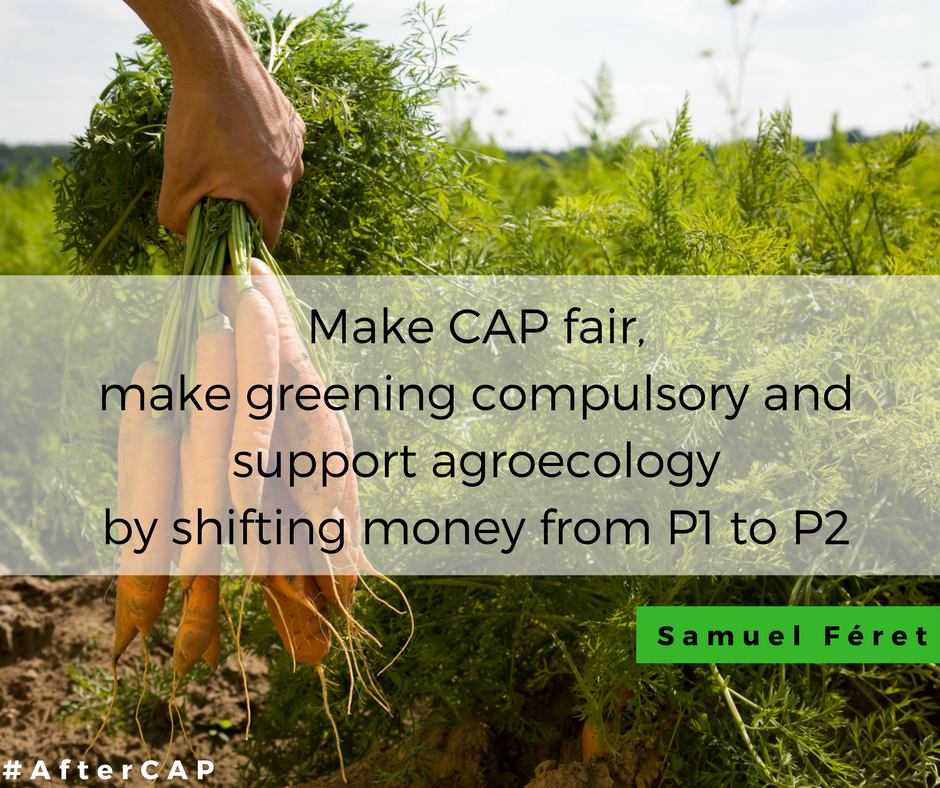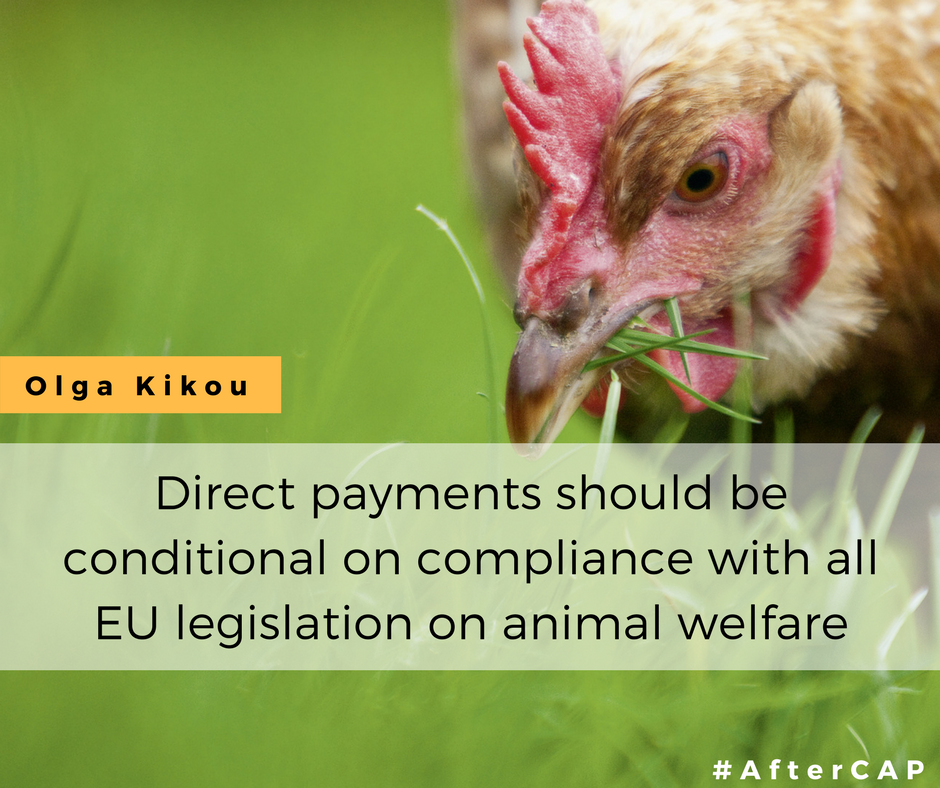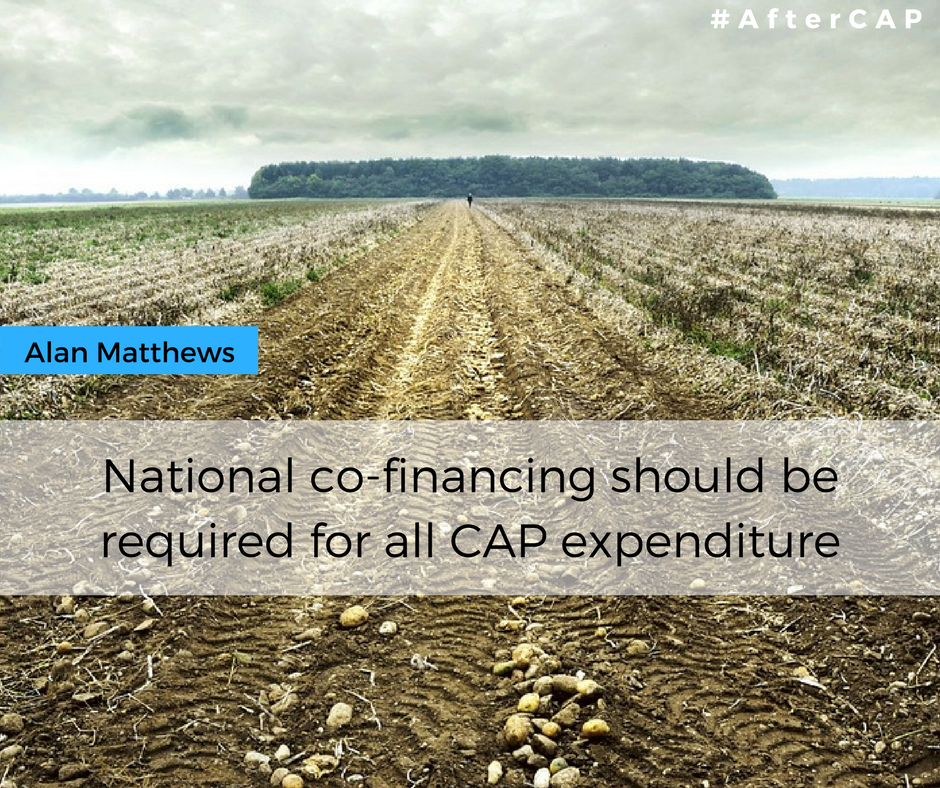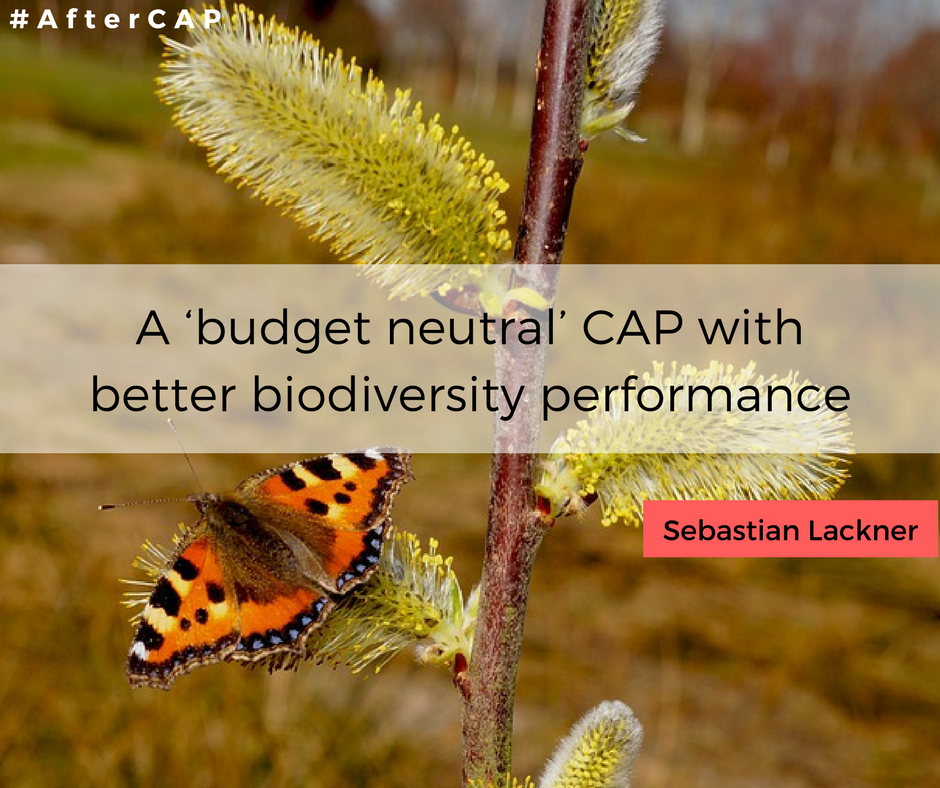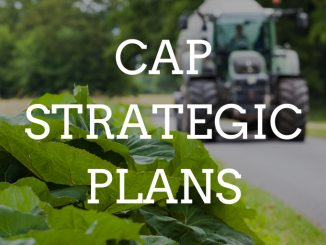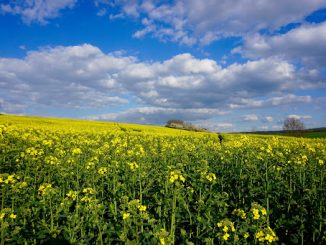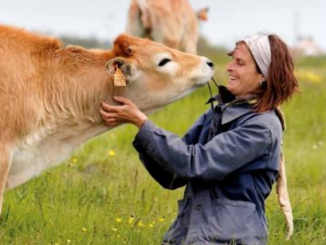Wrapping up this third curated debate, we in ARC2020 begin to draw elements of a road map for how the Common Agricultural Policy could evolve in a way that addresses multi-faceted challenges, with a view to help agri-food and rural development become genuinely sustainable. The debate is of course not closed. In fact, the timing is perfect – the European Commission has recently launched a consultation on modernisation and simplification of the CAP. Let’s use this #AfterCAP debate as a springboard to delve deeper into Europe’s agri-food and rural policies.
In this series, our contributors have approached the future of the CAP from diverse perspectives – agricultural economics, rural development, nature conservation, animal welfare and more. Contributors have all been prominent activists, bloggers, lobbyists and researchers.
Log of the entire #AfterCAP debate
But let’s draw some commonalities together…
1: The direct subsidy system is broken… but remains ‘resilient’
An important yet obvious starting point is, as nature conservationist campaigner RSBP’s Tom Lancaster put it: « The question is often asked of the Common Agricultural Policy – what is it exactly that the public is paying for? For a policy that continues to absorb 40% of the EU budget, it’s an enduring scandal that no one can provide a satisfactory answer to that question. ». This longstanding criticism has been echoed for a long by diverse agricultural economists. Among them Alan Matthews believes it’s time to remove them: « Decoupled direct payments should be gradually phased out over a pre-announced transition period. ». One could said that such a transition period had already been announced – back in 1992. Indeed repeatedly over the last CAP reforms, economic rationality does not always stand up to the test of political contingencies.
Given the longstanding uneven distribution of CAP subsidies among farmers, Van der Ploeg has also condemned the subsidy system but did not suggested to remove it entirely : « Movable upper ceilings on farm size need to be imposed on a regional basis. Subsidized farms that exceed the upper ceiling will only be allowed to continue if the ratio between labour objects and labour input is equal to, or lower than, that of the average farm. Thus, large rural estates might continue, provided that they generate enough employment. (…) Income payments related to historical production are to be eliminated. New flat rate payments should be made and be conditional upon meeting criteria for landscape management and biodiversity protection. »
Olga Kikou for CIWF considers the condition farm animals are kept in to be very poor under the CAP: « Animal welfare payments to farmers were introduced in the CAP over a decade ago in order to compensate farmers for going beyond both national and EU baseline standards. It is doubtful whether these have led to real improvements. Weak or non-existing sanctions in cases of non-compliance have further damaged the drive for any improvements »
Only the COPA voice’ Pesonen defended « a stable, sustainable CAP, which maintains both the first and second pillars and direct payments to farmers, is ensured post-2020 ». For Copa, direct payments are desperately needed to secure farmers’ income, at least those of eligible farmers, and subsidies are safety net to manage price volatility and help with investment.
2: Economics of farmholdings at the core of the CAP
For both agricultural economists’ and farmers unions’ contributors, economic viability of farmholdings remain the core of the CAP, accordingly to the EU Treaty objectives set for the CAP. To address the various weaknesses and failures of the current CAP Alan Matthews has echoed a voice that tends to be mainstreamed by policymakers and farmers unions about risk management : « Some changes will be expected on market management and risk management. Supporters of a more interventionist CAP will point to the voluntary supply reduction scheme introduced in the dairy sector and may try to make this a more permanent fixture of the CAP. The Agricultural Markets Task Force has recommended that the EU’s risk management toolkit should be made more attractive as well as become a mandatory element in Member State’s rural development programmes. It has proposed that funding should be shifted from direct payments to fund “a genuine and predictable safety-net for farmers to apply in times of market imbalance”. There is some support in the Parliament to introduce counter-cyclical payments in the EU, following the US example, although such a major reversal of the past trajectory of CAP reform is unlikely to be widely supported. »
Copa’s voice listed better trade and markets measures, as requested by their unions and cooperatives members: « a regulatory framework […] in the EU that protects suppliers; an ambitious export strategy and balanced trade agreements are ensured. The free trade talks between the EU and Japan must be concluded in 6 months. Trade deals with Mexico and Indonesia will also benefit us; Promotion measures are stepped up to develop markets further and in other parts of Asia and Africa for our quality products; non-tariff barriers to trade are tackled and quality products covered by Geographical Indications (GIs) are recognised and protected around the world; Tools at farm level are developed in the CAP post-2020 to help farmers remain viable and better manage the risks of increasingly volatile markets. For example, risk management measures, insurance, futures markets, stronger measures to manage the market. ».
Surprisingly no contributor made the point that risk management tools already exists in the CAP -Pillar 2- as well as generous hectare-based subsidies that contribute to reduce cashflow risk. Obviously existing mechanisms may not be optimal to cover rising structural and epidemic risks (market, sanitary and others) but CAP critics always ask for more from the CAP while its actual use by member states and regional authorities is sub-optimal in many of its components.
3: Towards a result-oriented #AfterCAP: more environment, climate and animal welfare
Like many EU conservationist groups, Lakner and Oppermann advocate for an expected, detailed paradigm shift in the CAP’s design towards environmental public goods, as the CAP failed to deliver substantial progress. « What we are suggesting instead, in policy terms, is public money to public goods » that includes following instruments « to address the problem »: i) Sustainability payment: This payment should have some general environmental requirements such as minimum proportion of ecologically valuable area in both arable and grassland, and an upper limit on livestock density. It could also be combined with other general criteria of animal welfare or measures against climate change. Payment to be granted per hectare for the total area of a farm; ii) Agri-Nature payment (ANP): This payment would be dedicated to measures for high nature value area on arable and grassland. In our concept, we list ten EU-wide measures which would promote biodiversity in the agroecosystems and which are so far underrepresented in the classical agri-environmental schemes. For such a payment we need to set a clear incentive for both farmers and for member states offering these measures; iii) rural development programs: These include the agri-environment and climate programs, the support of organic farming and the rural development programs. This measures have less onerous administration, so here the co-financing rate might be slightly below the agri-nature payment.»
Again, and whatever about the levels of ambition, such threefold payment scheme is already available in the CAP toolbox and financial architecture. Even Alan Matthews may accept the two pillars structure when he suggests : « Payment entitlements should be replaced by a contractual framework between farmers and public authorities. Cross-compliance and the greening payment should be replaced with ‘conditional greening’ whereby the receipt of public support would be conditional on enrolling in a basic (shallow) environmental scheme devised by the Member State. »
In addition, regarding animal welfare, Olga Kikou reminded us that animal condition is a blind spot of the environmental triangulation of the CAP (cross compliance/greening/agri-environmental and climate schemes): « The improvement of animal welfare should become a compulsory objective and priority ; public funding should be used to support concrete and measurable positive outcomes in animal welfare ; a more comprehensive plan of direct payments should be conditional on compliance with all EU legislation on animal welfare, including poultry production which is currently excluded ; minimum spending requirements and mandatory measures should help improve standards for animal agriculture ».
4: Integrated Rural Development : a « new guiding image »
While Rural Development has been considered for some as the future of the CAP some decades ago, it’s no longer the case given its very farming-oriented feature today. Van der Ploeg contributions have been rare and valuable at the nexus of agricultural economics and rural development : « Agriculture as a whole (or, ‘the rural’) needs to be regarded, and dealt with, as a precious constellation that harbours millions of family farms, sustains considerable employment and allows people to engage in attractive and autonomous work. It is also the custodian of beautiful landscapes and their reproduction, of cultural heritage and offers the promise of making a strong and positive contribution to the mitigation of climate change. It is where biodiversity is located and where ‘rural natures’ are the basis for food production. The rural and the agricultural activities also provide a space that is accessible to, and cherished by, urban people who use and enjoy it in a myriad of ways. To protect and further develop this agriculture, the EU needs a new policy. And a new policy needs a new guiding image that clearly demarcates the rupture with the previous period when ‘structural change’ was central. »
Such an approach flouts the 1999 divide between Pillar 1 and 2 and try to reconnect both through a genuine integrated rural development with the farming sector as a component but not the core. In that respect van der Ploeg proposals have included food-related measures while nevertheless do not make the claim to be a food policy : « The maintenance of landscapes and the protection of biodiversity will be delegated to autonomous territorial co-operatives that will provide new forms of local and regional self regulation ; support will be given to construct new markets that are nested in direct relations between food producers and consumers and the provision of appropriate and adequate regulation schemes ; support will be given to enhance the multifunctionality of farms. Special support will be given to farms that engage in on-farm processing and for constructing new and/or developing existing small cooperatives that process and market food products ; the inflow of young people into the agricultural sector (from both agricultural and non-agricultural background) will be stimulated further. The reform of over-sized farms should be used to make land available for young people wanting to start farming. »
5: Wrapping up the wrap up
To conclude, let’s outline some extra observations:
Through this debate no one has challenged the indispensable character of the CAP – albeit the scandalous distribution of aids for some – rather all have called for a modernised or refocused focus of the CAP. Also, no one has challenged the general objectives of the CAP as set by the Treaty nor the pursued three objectives set by the 2013 reform (viable food production, sustainable management of natural resources and balanced territorial development).
In other words a future for CAP is expected. However, diverse approaches have been expressed. On one side, a majority of contributions remains attached to a centralised and top down approach where all design features comes from Brussels -and sometimes these are very prescriptive.
On the other side few have highlighted a decentralised approach -albeit van der Ploeg to an extent – where regional and national authorities have their say in designing the future CAP -and not only implementing it afterwards. In a different way Matthews outlined the national level following a budget spending rationale based on results: « The allocation of budget resources should be incentive-based so that budgets are allocated to Member States based on performance as well as needs. ».
Whether a Common Food and Farming Policy has been put on the table by some, such as Compassion in World Farming, its objectives, scope and articulation with the current EU Treaty and policy framework remains unclear, as well as its added value to Member States portfolio and policies. There is also a gap regarding the nutritional dimension of food policy, given its has mention ed only at the end of CIWF contribution : « Food policies should promote sustainable diets and consumption patterns which should guide agricultural production ».
All #AfterCAP debate contributions
- What Does The Public Pay For?
by Tom Lancaster - Uncertain Terrain but Targeted Suggestions
by Alan Matthews - Towards an integrated rural development policy 2.0
by Jan Dowue van der Ploeg - Towards an Integrated Food & Farming Policy with an Animal Welfare Focus
by Olga Kikou
COPA Need to Move Beyond “Productivist Paradigm”
by Olga Kikou - Copa Cogeca on Future Farming
by Pekka Pesonen - Fit, Fair & Sustainable: A new agricultural policy model for the CAP 2021
by Lakner and Oppermann
COPA’s #AfterCAP plans: fail on market, red tape & public goods
by Lakner and Oppermann - One CAP, 32 national recipes – who is stirring the pot?
by Samuel Féret

